Related Research Articles

Forest gardening is a low-maintenance, sustainable, plant-based food production and agroforestry system based on woodland ecosystems, incorporating fruit and nut trees, shrubs, herbs, vines and perennial vegetables which have yields directly useful to humans. Making use of companion planting, these can be intermixed to grow in a succession of layers to build a woodland habitat. Forest gardening is a prehistoric method of securing food in tropical areas. In the 1980s, Robert Hart coined the term "forest gardening" after adapting the principles and applying them to temperate climates.

Gertrude Jekyll was a British horticulturist, garden designer, craftswoman, photographer, writer and artist. She created over 400 gardens in the United Kingdom, Europe and the United States, and wrote over 1000 articles for magazines such as Country Life and William Robinson's The Garden. Jekyll has been described as "a premier influence in garden design" by British and American gardening enthusiasts.

Sissinghurst Castle Garden, at Sissinghurst in the Weald of Kent in England, was created by Vita Sackville-West, poet and writer, and her husband Harold Nicolson, author and diplomat. It is among the most famous gardens in England and is designated Grade I on Historic England's register of historic parks and gardens. It was bought by Sackville-West in 1930, and over the next thirty years, working with, and later succeeded by, a series of notable head gardeners, she and Nicolson transformed a farmstead of "squalor and slovenly disorder" into one of the world's most influential gardens. Following Sackville-West's death in 1962, the estate was donated to the National Trust. It was ranked 42nd on the list of the Trust's most-visited sites in the 2021–2022 season, with over 150,000 visitors.

William Robinson was an Irish practical gardener and journalist whose ideas about wild gardening spurred the movement that led to the popularising of the English cottage garden, a parallel to the search for honest simplicity and vernacular style of the British Arts and Crafts movement, and were important in promoting the woodland garden. Robinson is credited as an early practitioner of the mixed herbaceous border of hardy perennial plants, a champion too of the "wild garden", who vanquished the high Victorian pattern garden of planted-out bedding schemes. Robinson's new approach to gardening gained popularity through his magazines and several books—particularly The Wild Garden, illustrated by Alfred Parsons, and The English Flower Garden.
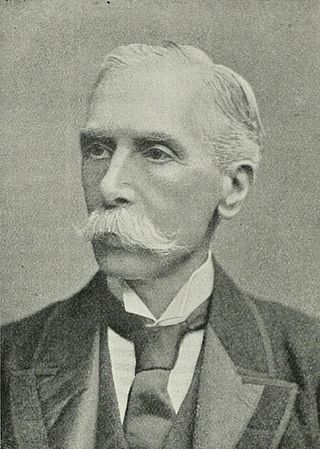
Alfred Austin was an English poet who was appointed Poet Laureate in 1896, after an interval following the death of Tennyson, when the other candidates had either caused controversy or refused the honour. It was claimed that he was being rewarded for his support for the Conservative leader Lord Salisbury in the General Election of 1895. Austin's poems are little-remembered today, his most popular work being prose idylls celebrating nature. Wilfred Scawen Blunt wrote of him, “He is an acute and ready reasoner, and is well read in theology and science. It is strange his poetry should be such poor stuff, and stranger still that he should imagine it immortal.”

Erythrina crista-galli, often known as the cockspur coral tree, is a flowering tree in the family Fabaceae, native to Argentina, Uruguay, southern Brazil and Paraguay. It is widely planted as a street or garden tree in other countries, notably in California. It is known by several common names within South America: ceibo, seíbo (Spanish), corticeira (Portuguese) and the more ambiguous bucaré, to name a few. Its specific epithet crista-galli means "cock's comb" in Latin.

John Parkinson was the last of the great English herbalists and one of the first of the great English botanists. He was apothecary to James I and a founding member of the Worshipful Society of Apothecaries in December 1617, and was later Royal Botanist to Charles I. He is known for two monumental works, Paradisi in Sole Paradisus Terrestris, which generally describes the proper cultivation of plants; and Theatrum Botanicum, the most complete and beautifully presented English treatise on plants of its time. One of the most eminent gardeners of his day, he kept a botanical garden at Long Acre in Covent Garden, today close to Trafalgar Square, and maintained close relations with other important English and Continental botanists, herbalists and plantsmen.
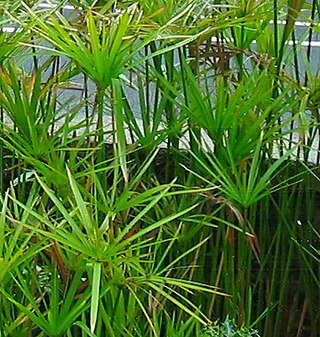
Cyperus alternifolius, the umbrella papyrus, umbrella sedge or umbrella palm, is a grass-like plant in the very large genus Cyperus of the sedge family Cyperaceae. The plant is native to West Africa, Madagascar and the Arabian Peninsula, but widely distributed throughout the world. It has gained the Royal Horticultural Society's Award of Garden Merit. The subspecies Cyperus alternifolius ssp. flabelliformis is also known as Cyperus involucratusRottb..

× Phyllothamnus is a hybrid genus in the family Ericaceae with one known species, × Phyllothamnus erectus, an artificial hybrid between Phyllodoce empetriformis and Rhodothamnus chamaecistus, first described in 1850 as Bryanthus × erectus.
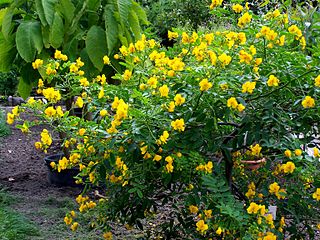
Senna corymbosa is an ornamental plant in the genus Senna. It is also known as Argentine senna, Argentina senna, buttercup bush, flowering senna, Texas flowery senna or tree senna.

Crambe cordifolia, the greater sea-kale, colewort or heartleaf crambe, is a species of flowering plant in the family Brassicaceae, native to the Caucasus. It has gained the Royal Horticultural Society's Award of Garden Merit.
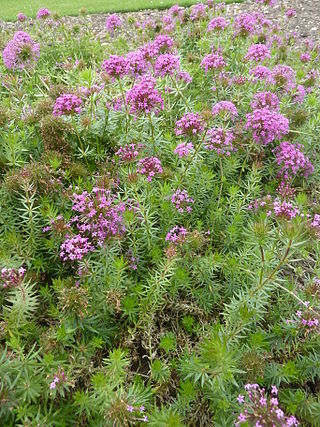
Phuopsis stylosa, the Caucasian crosswort or large-styled crosswort, is a low-growing, mat-forming, aromatic perennial plant in the madder, or bedstraw family Rubiaceae. It has whorls of narrow, aromatic leaves and terminal clusters of tubular pink flowers. Phuopsis stylosa is native to the Caucasus and Iran, and is widely grown elsewhere as a garden plant.

Hornungia alpina is a flowering plant in the family Brassicaceae. It is native to the mountains of Southern and Central Europe, as far south as northern Spain, central Italy and North Macedonia , and is sometimes grown as an ornamental plant in gardens .
Reginald John Farrer, was a traveller and plant collector. He published a number of books, although is best known for My Rock Garden. He travelled to Asia in search of a variety of plants, many of which he brought back to England and planted near his home village of Clapham, North Yorkshire.
Coral Gardens and Their Magic, properly Coral Gardens and Their Magic Volume I: A Study of the Methods of Tilling the Soil and of Agricultural Rites in the Trobriand Islands and Coral Gardens and Their Magic Volume II: The Language of Magic and Gardening, is the final two-volume book in anthropologist Bronisław Malinowski's ethnographic trilogy on the lives of the Trobriand Islanders. It concentrates on the cultivation practices the Trobriand Islanders used to grow yams, taro, bananas and palms which Malinowski's more famous ethnography Argonauts of the Western Pacific briefly mentioned in passing. It describes the gardens in which the Trobrianders grew food as more than merely utilitarian spaces, even as works of art. In 1988 Alfred Gell called the book "still the best account of any primitive technological-cum-magical system, and unlikely ever to be superseded in this respect". The book has been described as Malinowski's magnum opus.
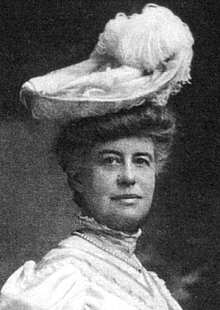
Helena Rutherfurd Ely was an American author, amateur gardener and founding member of the Garden Club of America whose three books influenced American and British gardeners to avoid Victorian formal gardens in favor of plantings that embodied an "informal and sensual style." She focused on planning her gardens around planting "hardy perennial plants found in the agricultural landscape."
(Arthur) Bernard Miall (1876-1953) was a British translator and publisher's reader.

Writing about gardens takes a variety of literary forms, ranging from instructional manuals on horticulture and garden design, to essays on gardening, to novels. Garden writing has been published in English since at least the 16th century.
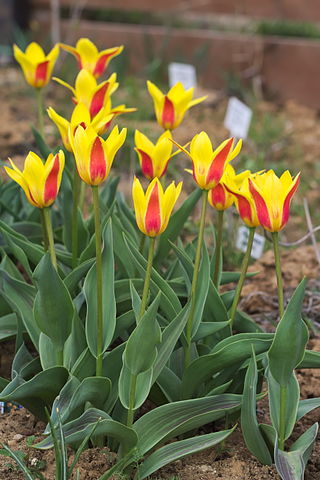
Tulipa kaufmanniana, the water lily tulip, is a species of tulip native to Central Asia.
References
- Pink, Alfred (1904): Gardening for the Million. Fisher Unwin, London. TXT and HTML fulltexts at Project Gutenberg.